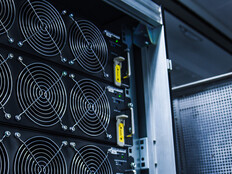6 Ways Organizations Have Launched Into Digital Transformation
IT leaders across several industries are intrigued by digital transformation, but many still haven’t figured out how to put it to work for their organization. Some organizations laid the groundwork with early Internet of Things projects. Others can benefit by studying these early successes and failures.
As enterprises look for effective, manageable entry points into digital transformation and IoT, they should consider use cases proven effective for organizations in their industries. Here are six of the most common — and valuable — ways businesses are already adopting innovative solutions.
MORE FROM BIZTECH: What's stalling digital transformation efforts?
1. Energy Management and Smart Buildings Buoy Efficiency
This is a use case that applies to organizations in practically all industries, as every dollar that can be saved from reductions in heating, cooling and water usage can be reinvested in the business. Additionally, many organizations undertake ambitious energy and water conservation efforts, and smart building programs can increase worker comfort. According to Intel, a smart building program can cut energy costs as much as 8 percent in the first year of implementation, with annual savings reaching up to 30 percent in subsequent years.
2. IoT Data Makes Predictive Maintenance A Reality
With connected sensors, organizations can continuously monitor the condition of high-value and mission-critical equipment for signs of imminent failure, and then either proactively perform repairs or replace the equipment before it malfunctions. This not only decreases maintenance costs, but also prevents productivity losses by minimizing equipment downtime. Predictive maintenance is an especially important IoT use case for industries (such as the gas, oil and energy sectors) that require organizations to operate in remote environments where maintenance is a major challenge.
Shell, in partnership with Microsoft, is one organization that's making use of IoT data to institute predictive maintenance efforts on its oil rigs and at gas stations.
“From pipelines through to platforms to wind farms, you have to maintain a heck of a lot of kit in this value chain,” Dan Jeavons, general manager of data science at Shell, said during a recent panel discussion at Microsoft Ignite of the company's predictive maintenance efforts. “And if we can provide our operators with less information around what’s going to happen next and allow them to move toward condition-based monitoring of equipment, to move toward real-time detections of anomalies, that’s going to really change the game.”
3. Predictive Analytics Offer Organizations a Boost
As organizations collect and analyze more data, they are finding ways to use this information to forecast vital variables such as customer needs and product demand. Better forecasting can help enterprises to get ahead of the market with their offerings, and can lead to manufacturing schedules, marketing campaigns and pricing strategies that allow them to match the type and quantity of their products and services to changing conditions on the ground. The data needed for effective predictive analytics programs can be gleaned from IoT components including video feeds, mobile geo-location, social media channels and log files.
4. Connected Video Surveillance and Monitoring Ups Safety
Many businesses have utilized security cameras for decades. By connecting IP-based cameras to the network and applying analytics tools, organizations can automate existing processes and arrive at valuable new insights. Many states and cities already use camera systems to automate processes such as speed-limit enforcement and toll collection, and analysts foresee a future in which cameras are able to use facial recognition and other intelligent features to make “decisions” on their own. For instance, public street cameras might one day automatically dispatch first responders after an automobile accident.
5. Real-Time Location Tracking Improves the Customer Experience
Tools such as radio frequency ID tags and mobile beacons can track people and assets. These solutions are often used in the retail sector, as well as settings where inventory management is a critical concern. In retail, the simple act of keeping the right products in the right place on the shelf so they’re available for customers to purchase can prove deceptively difficult. And when retailers make mistakes in this area, it often costs them sales and has a negative impact on the overall customer experience.
“In an era of omni-channel retail — which demands high inventory accuracy — the errors created in the supply chain propagate downstream and ultimately impact a retailer’s ability to meet customer demand in a timely manner,” a recent report published by IDC notes. “As our results suggest, several of these errors found at the store or in direct shipments to the consumer via a retailer’s fulfillment center are caused by the upstream disparity between the information flow and the physical product flow amongst brands and retailers. … RFID technology eliminates the errors commonly found in the process, ensuring the accurate flow of information and products.
According to the International Council of Shopping Centers, 41 percent of shoppers want stores to provide interactive shelves to give product information, and 36 percent are interested in in-store tablets that show a larger offering of products to purchase.
6. Worker Safety Gets a Boost from IoT
According to the International Labor Organization, workplace accidents account for 320,000 deaths each year, with non-fatal accidents numbering more than 300 million annually. IoT-connected wearable devices, including helmets and wristbands, can help prevent these incidents by collecting biometric, environmental and geo-location data and sending real-time alerts to employees and managers if workers’ well-being is compromised. For example, wearables can help ensure workers aren’t exposed to excessive levels of heat, cold, radiation, noise or toxic gases.









